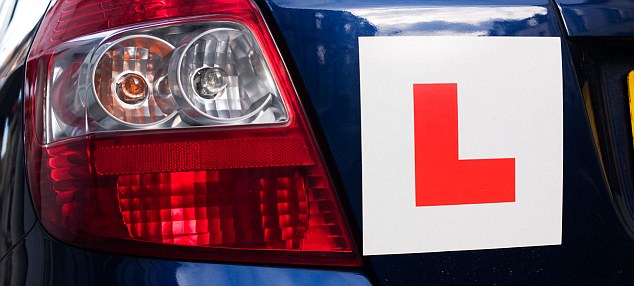Fund and trust ideas for first time and cautious investors

If you are new to investing then the huge number of funds and investment trusts on offer can be confusing. Fortunately, This is Money’s experts have some ideas to get you started.
From the bafflingly wide range, they have picked some ideas to use as starting points for what will hopefully be a successful investing career.
Of
course, which fund is best for you depends on your individual
circumstances and what investing story you think will unfold. So, always do your own research, choose your investments carefully and hopefully you will make your own investing luck.

Starting out: Fund tips for beginner or cautious investors
How to use our fund and investment trust ideas
This is Money asks our panel of experts to suggest investments for a variety of investors.
These are people with a long
history in the investment field and looking at their choices gives you
some pointers. But remember, these are just ideas and whether a particular fund is right for you is your own
decision and making that requires deeper research.
Their ideas are suitable for investors opting to use an Isa wrapper or not. Go to the bottom of the page to find out why we like investing through an Isa.
Read the tips, follow the links to the funds’ performance and read This is Money’s Investing section to gather ideas. If you have any doubts, talk to an IFA [find an adviser].
The expert’s fund and investment trust ideas
Gavin Haynes, managing director of Whitechurch Securities, picks:
Newton Real Return
Ongoing charge: 0.79%
Yield: 2.3%
This fund invests across different asset classes and manager Ian Stewart focuses solely on producing a positive absolute return. The fund is targeted to outperform cash by 4 per cent on a rolling, three-year basis (although positive returns are not guaranteed).
Haynes says: ‘Stewart will build a portfolio for the long-term, while also making good use of derivative strategies to enhance returns and control risk.
‘He is a proven effective asset allocator who is supported by a strong team to draw ideas for the portfolio. He has a cautious view of the world and the fund is defensively positioned, making it a suitable choice for the more cautious investor.’
RELATED ARTICLES
Previous
1
Next

How to invest in funds, investment trusts and ETFs

How to choose the best DIY Isa platform

Getting into the driver’s seat: What type of investor are…

How to be a DIY investor and take control of your money to…
Share this article
Share
18 shares
Adrian Lowcock, head of investing AXA Wealth, highlights:
Henderson Cautious Managed
Ongoing charges: 0.71 per cent
Yield: 3.1 per cent
The aim of this fund is to provide investors with a combination of income and growth by investing in UK shares and bonds. It limits the amount of risk it takes by capping the amount it invests in shares at 60 per cent of the portfolio.
Top holdings include BP, HSBC and Astrazeneca.
Mr Lowcock says: ‘Manager Chris Burvill adopts a simple investment approach by considering the economic environment. He adjusts the fund’s positioning between shares, bonds and cash.
‘The equity element of the fund is largely focused on high-yielding, UK shares. He combines the fixed income element to provide some protection against more volatile equity markets. By adjusting the asset allocation he looks to mitigate the volatility of a pure equity fund. This fund can provide a good core for investors looking for a diversified UK exposure given its flexible approach.’
Jason Hollands, managing director of Tilney BestInvest, suggests:
Invesco Perpetual Global Targeted Returns
OCF: 0.82%
Yield: 1.00%
2016 is shaping up to be a volatile year of the markets, so cautious investors should have absolute funds on their radars, explains Hollands.
‘These are funds that aim to generate positive returns across different market environments and aren’t heavily dependent on overall markets rising – though they aren’t guaranteed to escape losses.
‘There are a wide range of investment techniques to try to achieve this, but this fund provides a “one stop shop” approach to absolute return investing, as it is effectively an umbrella fund that invests in around 25 underlying, distinct investment strategies, which invest across a wide range of asset classes including shares, bonds, currencies and interest rates from around the world.’
He says the fund targets a return, before costs, of 5 per cent a year over and above UK interest rates as measured by three-month LIBOR, on a rolling three-year time period.
‘Importantly it aims to achieve these returns with less than half the volatility of global stock markets. While the fund was only launch in late 2013, key members of the team managing it had previously worked on Standard Life Global Absolute Return Strategies fund, the biggest fund of this type and so far, it has proved the steady eddy it set out to be.’
John Newlands, of Brewin Dolphin, highlights:
Witan Investment Trust
Ongoing charges: 0.89 per cent
Yield: 2.36 per cent
The Witan Investment Trust seeks opportunities from global equity markets, putting your money in a variety of countries and sectors which should spread your risk.
Holdings include RELX, Diageo, Unilever and The London Stock Exchange.
Mr Newlands says: ‘My current choice in this category is Witan – a trust formed in 1909 originally to host the fortunes of the Henderson family, whose finances at that time have been described as “so complex as to rival those of a small nation”.
‘Today, Witan is a slick, modern, professional operation to which smaller investors can gain access by buying a single share. Moreover Witan, which has been managed by the able and enterprising Andrew Bell since 2010, could offer an outlet for regular savings plans of say £100 or more per month for teenagers, grandchildren or just for yourself.’
Darius McDermott, managing director of Chelsea Financial Services, picks:
Rathbone Strategic Growth Portfolio
Ongoing charges: 0.5%
Yield: 1.3%
This fund invests in other funds, investment trusts and passives and McDermott says the manager, David Coombs, is very adept at finding lesser-known, but extremely good investments.
‘It has a big focus on delivering this via a risk-controlled framework. It’s a great one-stop shop for first-time or cautious investors wanting some diversification.’
How to invest in an Isa
Making the most of Isa investing is
not just about picking investments wisely, it’s also important to make
sure you hold them in the best place.
That means keeping fees down to a minimum but also making sure your platform is right for you.
Read our essential guide
Patrick Connolly, chartered financial planner at Chase de Vere, picks:
HSBC FTSE All Share Index
Ongoing charges: 0.07%
Yield: 3.6%
Connolly says investors should have long-term exposure to the UK stock market and ‘the advantages of investing in a tracker fund are lower charges, little likelihood of significant underperformance and no concerns about fund managers leaving. A tracker fund can be a true buy-and–hold option’.
Of this HSBC fund, he says the company is a proven passive manager ‘and the HSBC FTSE All Share Index fund aims to track the performance of the FTSE All Share Index’.
He adds: ‘The largest holdings will always be in the biggest companies listed on the London Stock Exchange and include the likes of HSBC, British American Tobacco, GlaxoSmithKline, BP, Royal Dutch Shell and Vodafone.
‘The fund uses full replication of stocks for all of the major shares in the index and has an annual charge of around 0.07%.’
Why invest through an Isa?
Investing with an Isa is one of the few
opportunities we have for making money with very little tax but it
doesn’t offer complete tax-free status.
Every year the Government gives us a
tax-free Isa allowance.
Your Isa allowance for 2015/16 is £15,240 under the New Isa
regime. You can move money from an investment Isa into a
cash Isa under the new rules or put your whole allowance in a cash
Isa. This applies to any money you have invested in previous years.
Any gains within an Isa are
free from capital gains tax. Everyone has a CGT allowance of £11,000 per
year and many may feel they are unlikely to ever make more than this in
profit each year from selling their assets.
However, those who invest
consistently over time may one day be surprised at how much those
investments are worth and holding them in a tax-free wrapper makes
sense.
This is because
if they opt to sell all or a large amount of their investments at one
time and they are not held in an Isa, then they may be over the capital
gains tax limit and face a tax bill. Whereas, hold them in an Isa and
you have no such problem and will not even need to fill in a tax form if
you sell.
Income from investments is
also treated in a more tax-friendly way in an Isa. Corporate bonds and gilts
income is tax-free.
Dividends and shares income are still taxed at 10%
before they are received, so basic rate taxpayers will not gain any
extra benefit, but higher rate taxpayers do not have to pay any extra
tax that would normally be incurred.
if you are a basic rate
taxpayer you may hope to be a higher rate taxpayer one day, so putting
your investments in a tax-free wrapper is a sound tactic. Investing
through an Isa also removes the headache of filling in a tax return for
both income and capital gains.






